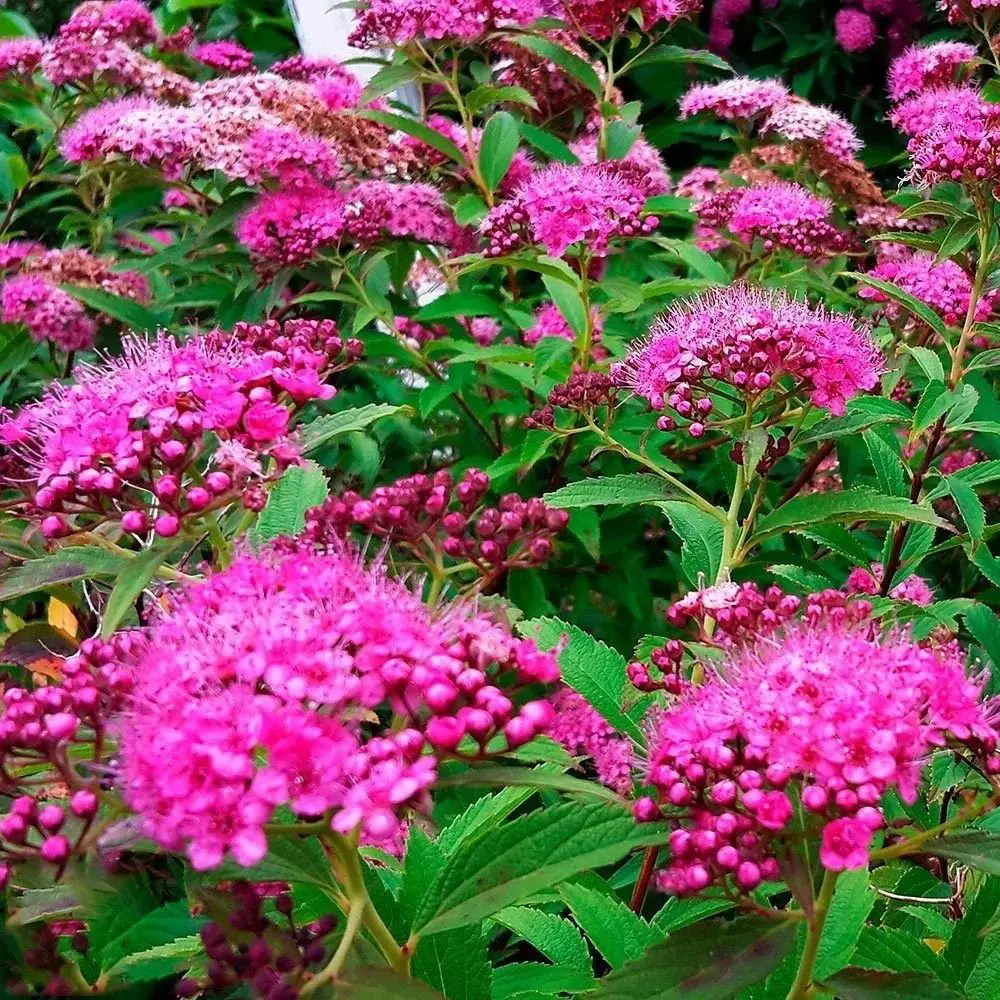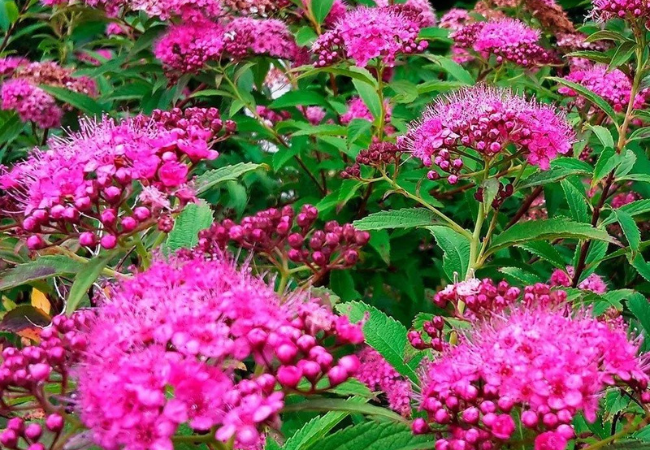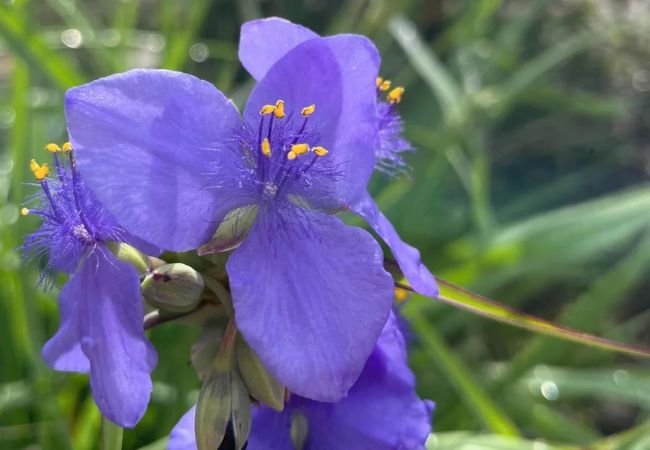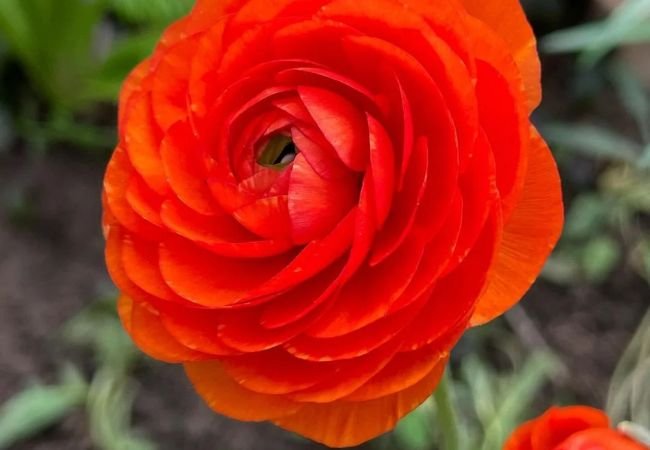Discover the beauty of Spirea Flowers. Learn about their varieties, care tips and versatile uses in landscapes. Perfect for gardeners seeking low-maintenance shrubs with stunning blooms.
Spirea is a genus of flowering shrubs beloved for their cascading branches and abundant blooms. These hardy plants offer a long season of interest, from spring flowers to attractive foliage and sometimes fall color. In this article, we’ll explore the world of Spirea and how to incorporate these graceful shrubs into your garden.
Here’s an information chart for Spirea:
| Category | Information |
|---|---|
| Botanical Name | Spirea spp. |
| Common Name | Spirea |
| Plant Type | Shrub |
| Hardiness Zone | Zones 3-8, depending on species |
| Sun Exposure | Full sun to part shade |
| Soil Type | Well-draining, fertile |
| Watering | Regular |
| Growth Habit | Bushy, dense |
| Height/Spread | Varies widely by species; typically 2-6 feet tall, spreads 2-8 feet |
| Special Features | Profuse flowering in spring and summer, attracts butterflies and bees, various foliage colors (depending on variety) |
What Are Spirea Shrubs?

Spirea belongs to the Rosaceae family. These deciduous shrubs are known for their arching branches covered in clusters of small flowers. Spirea comes in various sizes and bloom colors, including white, pink, and red.
Types of Spirea
Some popular Spirea varieties include:
- Bridal Wreath Spirea (Spirea prunifolia): Known for its white, double flowers
- Japanese Spirea (Spirea japonica): Features pink or red flowers and colorful foliage
- Bumald Spirea (Spirea x bumalda): A compact variety with pink flowers
Growing Spirea
Planting
- Plant Spirea in spring or fall.
- Choose a spot with well-draining soil and full sun to partial shade.
- Space plants according to their mature size, typically 3-6 feet apart.
Caring for Spirea
- Water regularly during the first growing season to establish roots.
- Fertilize with a balanced, slow-release shrub fertilizer in early spring.
- Prune after flowering to maintain shape and encourage new growth.
For more detailed care instructions, visit the Cooperative Extension System website and search for your local extension office.
Pests and Diseases
Spirea are generally hardy but can face some issues:
- Aphids: These small insects can damage new growth. Use insecticidal soap if infestation is severe.
- Fire blight: This bacterial disease can affect some varieties. Prune out infected branches promptly.
Uses of Spirea in the Garden
Foundation Plantings
Spirea works well in foundation plantings:
- Use compact varieties near house foundations
- Plant in groups for a cohesive look
- Combine with other shrubs for year-round interest
Hedges and Borders
Spirea can create beautiful hedges and borders:
- Use larger varieties for informal hedges
- Plant in mixed shrub borders for seasonal color
- Create low-maintenance property boundaries
Accent Plants
Spirea makes excellent accent plants:
- Use in corners of garden beds for structure
- Plant near entryways for a welcoming look
- Incorporate into butterfly gardens for nectar source
Container Gardening
Some compact Spirea varieties work well in containers:
- Grow in large pots on patios or decks
- Use as focal points in container gardens
- Combine with annuals for seasonal displays
For container gardening tips, check out the USDA Container Gardening resource.
Fun Facts About Spirea
- The name “Spirea” comes from the Greek word “speira,” meaning wreath, referring to the plant’s arching branches.
- Some Spirea species have been used in traditional medicine for various purposes.
- Spirea flowers are attractive to many pollinators, including butterflies and bees.
Spirea for Wildlife
Spirea plays a role in supporting local ecosystems:
- The flowers attract pollinators like bees and butterflies
- Dense growth provides shelter for birds and small animals
- Some varieties offer fall and winter interest for year-round habitat
Environmental Benefits
Spirea offers several environmental benefits:
- Many varieties are drought-tolerant once established
- They can help prevent soil erosion with their root systems
- Some native species support local ecosystems
For more information on using shrubs in landscaping, visit the U.S. Forest Service shrubs page.
Spirea shrubs, with their graceful form and abundant blooms, are versatile additions to many garden styles. Whether you’re using them for foundation plantings, hedges or as accent plants, these hardy shrubs offer long-lasting beauty and low-maintenance care.
From their cascading flowers to their ability to attract pollinators, Spirea provides something special for every gardener. With proper planting and minimal care, you can enjoy these charming shrubs for many years, adding structure and color to your landscape. Happy gardening with Spirea!
For more gardening tips and plant care guides, visit usagardenhub.com.






